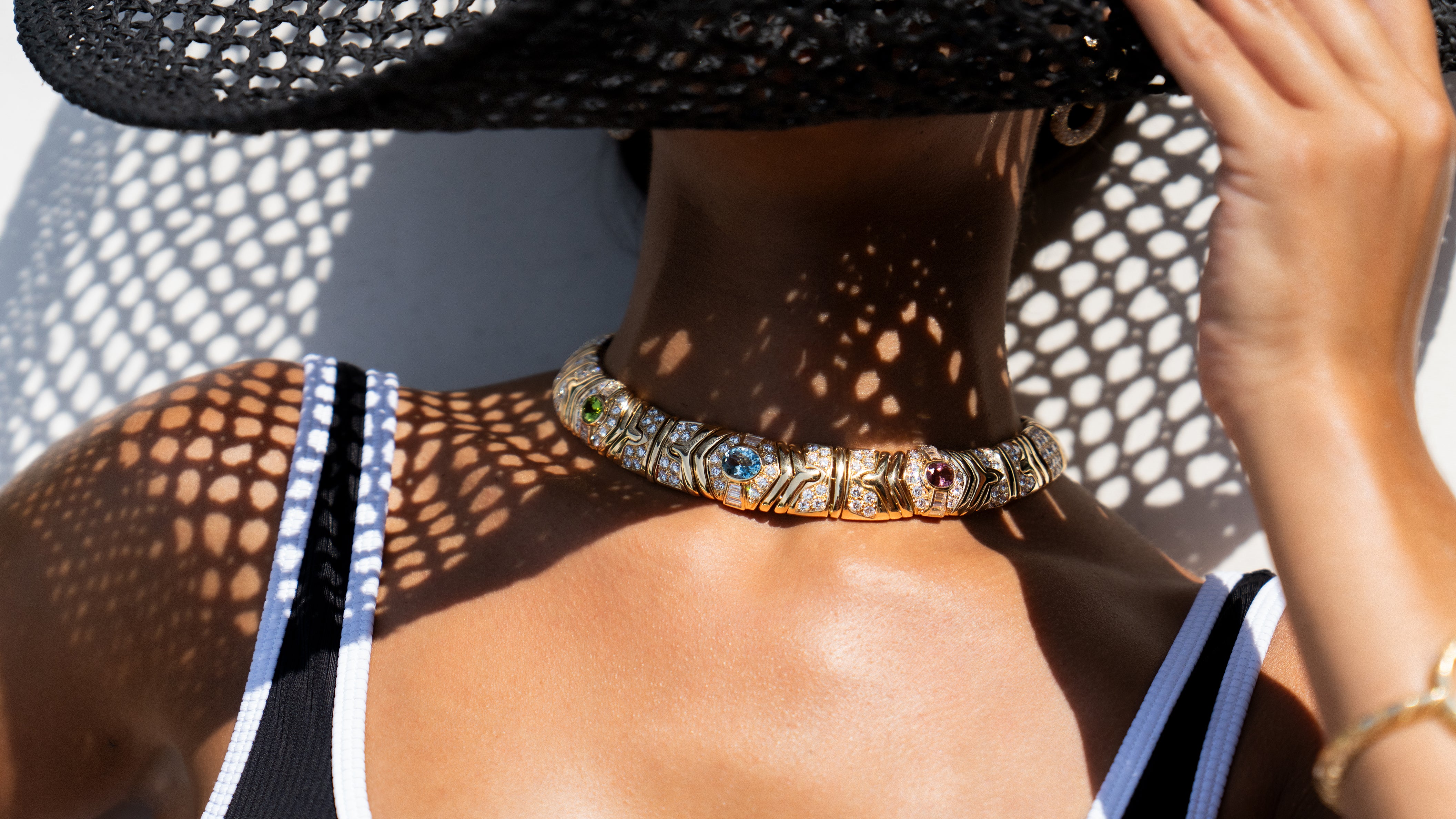Edward Oakes
This one-of-a-kind Arts & Crafts metalworker possessed a skill in hand-wrought jewelry that earned him a place in the Metropolitan Museum of Art.
From Kite Maker to Jewelry Artisan
Edward Everett Oakes was born in 1891 in Massachusetts. Like his father, he had unique creative abilities. As a teenager, young Edward engineered a kite design that attracted kite flyers from all over Boston and nearby villages. He made no secret of his design, but every boy preferred to purchase Eddy Oakes' kites because no one could make one that flew as well. Oakes had a talent for getting the sticks in just the right proportions and giving the proper curve to the crosspiece at the head of the kite. These same engineering instincts came into play when he transitioned to a career in jewelry design.
Opportunity Knocks
At the age of 18, Oakes was approached by jeweler Frank Gardner Hale, who had returned from England to establish his Boston studio. Hale offered Oakes the position of assistant. For five years, Oakes received extensive training from Hale, who shared his wealth of knowledge on jewelry and enamels that Hale had acquired at Chipping-Campden in Gloucestershire and with Frederick Partridge in London.
Oakes' next instructor was Josephine Hartwell Shaw, whose lively and original designs inspired Oakes. Hale and Shaw were both early medalists of The Society of Arts and Crafts, Boston.

On His Own
After completing three years of instruction with Shaw, Oakes opened his own shop in 1917, the same year the Boston Society of Arts and Crafts conferred Master Craftsman status upon him.
Oakes mastered the technique of design and execution, having studied historic design and learning past methods of jewelry making. He spent a significant amount of time in museums, gathering inspiration that he used in his designs. Over several years, Oakes developed his signature style, which is easily recognizable. His artistic genius, combined with his mechanical skill, resulted in stunning pieces that were true originals. Using materials of the most excellent quality, he also employed semi-precious gemstones for a breathtaking effect that rivaled pieces created using more expensive stones.
Casting is used only when fishing with a rod, not in making jewelry. – Edward Oakes

Not believing in mass-produced jewelry, every piece Oakes created was handcrafted. The clientele for Oakes' pieces included patrons of the Society of Arts and Crafts in Boston. Ads for Oakes' work appeared in Boston newspapers, and the society exhibited his work. Customers were also encouraged to submit special requests to the Society for Oakes to fill. Serious patrons found a direct path to Oakes' workshop, although they had to go through his assistant, Mrs. Thomson, who was known to quote a higher price than her boss.
While Oakes created jewels in a variety of forms, he specialized in wedding rings. A catalog from 1924 is a lovely showcase of his craft, exhibiting the exquisitely intricate metalwork that earned him his reputation. At the same time, Oakes reiterated that he was willing to modify the rings to suit or create a new ring from a sketch.
According to accounts at the time, while Oakes was willing to render sketches submitted by patrons, if he didn't approve of the sketch, he would follow his own design to create the finished piece.
For a brief period, from 1923 to 1928, Oakes also operated a shop in New York.
Unlike many of his contemporaries, Edward Oakes' business survived the Great Depression. He did so in large part by selling his stock designs. After World War II, Oakes added restyling to his business, repurposing customers' gemstones into his own unique creations.
After training with this father, Gilbert Oakes formed a company with Edward; they called it Edward Everett Oakes & Son. Oakes' granddaughter, Susan Oakes Peabody, took up the baton to continue the family business.
Edward passed away in 1960, Gilbert, in 1987.
Beautiful from All Sides
The merit of a real craftsman in a piece of jewelry is always revalued on the wrong side of an object. A customer will most always turn a piece of jewelry over. – Edward Oakes
Oakes believed a jewel's reverse side was as important as its front. He created his pendants to be reversible. For example, a cross pendant featured pearls on one side and amethysts on the other, creating two original looks in one necklace.

Jewelers' Marks
The fact that Edward Oakes' work is so distinctive helps identify his jewelry since only a few of his pieces were signed with his mark – an oak leaf with his name, OAKES, inside. Notched frames, serrated leaves, and small semi-precious cabochon bezel-set gemstones in floral, geometric patterns, and fine wirework are all telltale signs of Oakes' work.
Edward's son, Gilbert, took his father's mark and added a single acorn. Granddaughter Susan Oakes Peabody made the mark her own by adding a second acorn.
Exhibits and Awards
1923: Oakes was awarded the Medal of Excellence at the Society of Arts and Crafts in Boston. That same year, the Metropolitan Museum of Art purchased one of his tasseled pendants. Allegedly, it was one of the first times a living artist enjoyed this honor.
From early in his career, in 1915, Oakes' work was displayed at several of the Chicago Art Institute Annual Exhibitions of Applied Art. Also, a member of the Detroit Society of Arts and Crafts, Oakes, exhibited there many times beginning in 1921.
